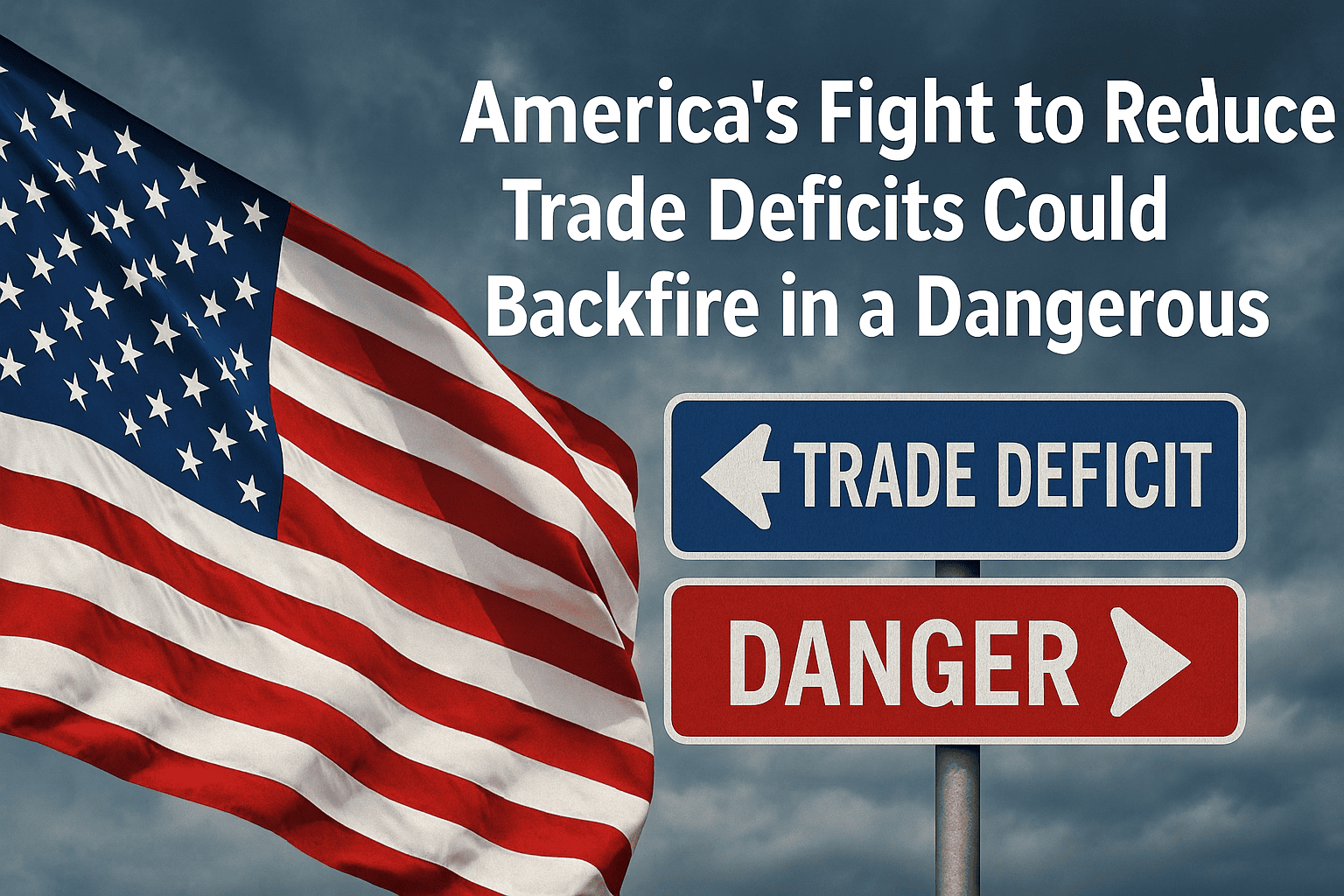The Story

In today's edition of Aaj Ki Story, SarvInsights brings you an in-depth look at why America’s ongoing battle to cut down its trade deficit might have unintended, and potentially dangerous, consequences.
The United States has long been running a trade deficit, meaning it imports more goods and services than it exports. While this isn’t a new problem, recent years have seen the U.S. take aggressive steps to tackle the issue—through tariffs, reshoring initiatives, and efforts to decouple from key trading partners like China. The goal is simple: reduce reliance on foreign production and boost domestic manufacturing. But beneath this seemingly patriotic economic policy lies a web of risks that could harm both the U.S. economy and the global trade system.
The Political Push
Trade deficits have always been a hot-button issue in American politics. They are often used as a symbol of economic weakness, cited as evidence that American jobs are being lost overseas. Politicians, especially during election cycles, push for "Buy American" policies, tariffs, and stricter trade agreements, portraying them as solutions that will bring jobs back home.
While these measures might sound good on paper and play well with voters, they come with serious economic consequences. Imposing tariffs on imports, for example, can lead to retaliatory tariffs from other countries. This tit-for-tat approach results in trade wars that hurt American exporters, disrupt global supply chains, and increase prices for everyday goods.
Supply Chain Shockwaves
The COVID-19 pandemic exposed vulnerabilities in global supply chains, prompting the U.S. to rethink its dependency on foreign suppliers, especially in critical sectors like semiconductors, pharmaceuticals, and rare earth elements. However, rebuilding these supply chains domestically takes time and enormous investment. In the short term, cutting off or limiting imports can cause shortages, increase inflation, and lead to product delays.
Furthermore, many industries rely on international collaboration to remain competitive. A sudden shift toward protectionism could stifle innovation, limit access to global talent and technology, and push American companies to lose their competitive edge.
Dollar Dilemma
Ironically, the strength of the U.S. dollar, a result of being the world's reserve currency, is one of the main reasons for persistent trade deficits. A strong dollar makes imports cheaper and exports more expensive. Unless the U.S. addresses this core issue, most other efforts might be cosmetic at best.
The Global Backlash
Efforts to reduce the trade deficit could also erode America’s standing as a leader in global trade. Other countries may form alternative trade blocs, bypassing the U.S. altogether. This fragmentation of global trade could make it harder to respond to collective challenges such as climate change, supply chain resilience, and food security.
Final Thoughts
In its effort to reduce trade deficits, America must tread carefully. Knee-jerk policies and protectionist measures might offer short-term political wins but could backfire in ways that harm long-term economic stability. A balanced approach—one that supports domestic industry without isolating the U.S. from the global economy—is the need of the hour.

